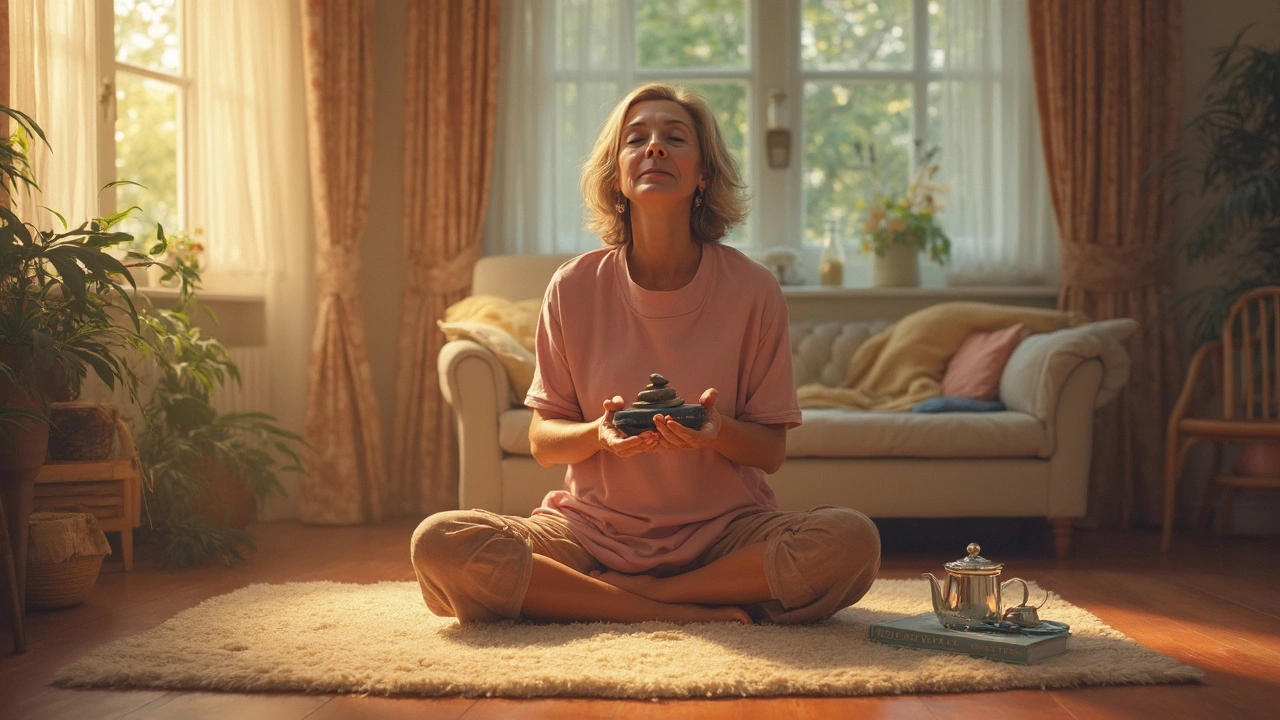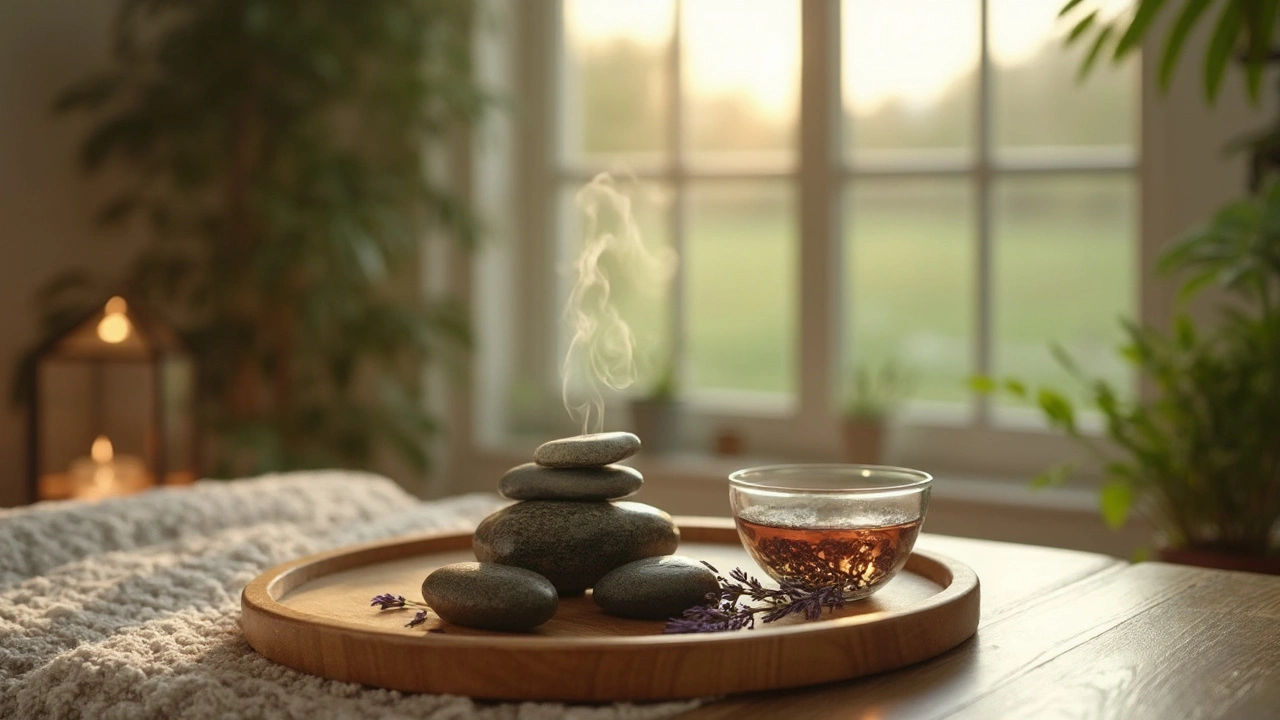Ever been so sore or stressed that you’d let someone roll a boulder across your back just to feel a bit better? That’s a weird way to put it, but the idea isn’t far from the truth—except instead of big boulders, stone massage uses smooth, heated or cooled stones to melt away pain and tension. This isn’t just a spa fad. Stone massage goes way back to ancient civilizations and keeps winning fans today for one reason: it works. Science keeps finding connections between heat therapy, touch, and the body’s way of dealing with pain. Real people from Olympic athletes to office workers swear by it. So, how does this ancient method stack up in our screen-filled, desk-bound world?
What Actually Happens During a Stone Massage?
Picture yourself stepping into a warm, dim room where the sound of soft music floats around. A massage therapist places smooth basalt stones—these hold heat impressively well—in hot water, warming them to just the right temperature (between 110-130°F, science geeks). They’re laid along your spine, in your palms, or even between your toes. The heat works its magic, softening tissues and telling your nervous system, “Hey, it’s safe to dial down the tension.” Sometimes, cold stones are used too—think marble or granite—for a refreshing flip that can ease inflammation fast. Why hot and cold? It’s all about contrast. Warm stones relax muscles, boost blood flow, and help get oxygen and nutrients flowing into sore or damaged areas. Cold stones reduce inflammation and can numb sharp pain. Combining the two tricks your body into speeding up its healing process. It’s not just about feeling good; it’s about giving your body the signals it needs to recover and stay resilient. You’re not just lying there while stones chill out on your back. The therapist might use the stones as an extension of their hands, guiding them with skill across key muscle groups (think shoulders, neck, lower back). This isn’t random—it’s systematic, with therapists trained everywhere from Arizona spas to Scandinavian wellness retreats. They study muscle anatomy and learn how to use pressure, motion, and temperature to loosen up every knot, trigger point, and tense cluster they find. The vibe matters, too. Aromatherapy often complements a stone massage, with essential oils like lavender and eucalyptus encouraging you to relax deeper. Don’t worry—if you’re allergic, you can skip the oils. The stones and the touch do the heavy lifting. And here’s an offbeat detail: some spa menus now offer personalized playlists or virtual reality headsets to make the experience even richer. But ask any practiced therapist and they’ll tell you—the right stones and touch matter more than all the tech in the world.

Stone Massage and Pain Management: Breaking Down the Science and Myths
Let’s get down to brass tacks—does stone massage really work for pain relief, or is it just a fancy rubdown? Turns out, the answer is yes, it can be a game-changer, but not for every ache or pain. What the research says is pretty eye-opening. Studies published in journals like Complementary Therapies in Medicine have shown that hot stone massage can significantly drop pain scores in folks with chronic low back pain, sometimes outperforming conventional massage alone. Rheumatoid arthritis, fibromyalgia, and even migraine sufferers have found improvements—though it’s rarely a miracle cure. Stone massage eases pain by borrowing from basic physiology. Heat relaxes tight, spastic muscles by making it easier for blood vessels to open up (vasodilation), which pushes nutrients and oxygen into crunched-up tissues. That not only feels amazing but literally helps muscles recover and detox waste faster. Then there’s the gate control theory—one of the big ideas in pain science. The idea? Stimulating nerve fibers with non-painful stuff (like warmth and pressure) sends signals up the spinal cord that ‘close the gate’ on pain. So your brain is flooded with “hey, this is nice!” messages that crowd out the pain signals. But don’t forget cold stones—these come in handy for swelling, bruises, or sharp, stabbing pain. Ever put an ice pack on a twisted ankle? That’s the idea, just more refined. The swap between hot and cold can trigger the body’s natural healing response, a process called “contrast therapy.” Athletes have used versions of this for decades, and now it’s part of smarter pain management in holistic massage therapy. Stone massage isn’t magic. If you’re dealing with sciatica because of a herniated disc, or have a new injury, you should always check with a healthcare provider—but for the average tension, old injuries, or those headaches you get from staring at a screen too long, the relief can feel real and lasting. People recovering from tough gym sessions, car accidents, and work-from-home burnout often find stone massage lets them sleep better, move with less pain, and deal with stress more easily. There’s a feel-good cycle at work: when pain eases, stress falls off, muscles repair faster, and the next round of soreness is easier to handle. If you want numbers, here’s some recent data you might find useful:
| Pain Condition | % of People Reported Relief | Session Frequency | Best Stone Temp |
|---|---|---|---|
| Chronic Back Pain | 75% | Weekly | 120-130°F (Hot) |
| Fibromyalgia | 63% | Bi-weekly | 110-120°F (Hot) |
| Migraine/Headache | 54% | As needed | 60°F (Cold) |
| Arthritis | 68% | Weekly | 115°F (Hot) |
| Sports Recovery | 80% | After Exercise | Hot-Cold Combo |

Maximizing the Stone Massage: Tips, Safety, and Making it Work for You
Heading into your first session with no clue what to expect? Here’s the low-down. Start by chatting with your therapist about your pain and what you want to get out of the session. This isn’t luxury for luxury’s sake; it’s about targeted relief. If your pain is localized (let’s say, lower back), ask your therapist to prioritize that area. Always make sure your therapist is certified. In the U.S. and Europe, proper stone massage training includes learning the right temperature ranges, sanitation, and the best techniques for different body types. One underrated tip: hydration. You’ll want to drink plenty of water before and after. Heat draws fluid into your tissues and lymph, and getting rehydrated flushes waste and keeps soreness from sneaking back in. Don’t eat a huge meal before your appointment either—your stomach and digestive system need a break so your body can focus on healing. For home enthusiasts, smaller heated stone kits are sold for self-massage, and they can work wonders on stiff hands, feet, or even your face (think about how nice that cool marble roller feels after a long day). But nothing beats the full experience you’ll get from a skilled pro. You shouldn’t book a stone massage if you’re pregnant (unless you’re seeing a trained prenatal specialist), have uncontrolled diabetes, open wounds, or certain skin conditions. And if you have nerve issues or take blood thinners, get the green light from your doc first. There’s a difference between “hurts so good” and legit pain—speak up if the stones are too hot or the pressure’s too much. If you want to really milk the benefits, book a session at the end of a busy week, or after a hike, tough workout, or stressful family meeting. For chronic pain, a short series of weekly sessions (4–8 weeks) can retrain your muscles to relax and your mind to quit hitting the panic button at every ache. Pair it up with gentle stretching, warmth at home, and some meditation or easy yoga to stretch out the benefits. And go easy on the expectations—regular sessions work better than one epic, extra-long massage every blue moon. Keep things honest: stone massage won’t fix a slipped disc or cure arthritis, but for managing pain, boosting circulation, and even improving mood, it’s a powerful and time-tested tool. With a skilled therapist, a quiet room, and the right temperature, you might just find yourself joining the many converts who swear by the ancient, simple, and deeply satisfying art of stone massage.


 Health and Wellness
Health and Wellness